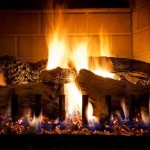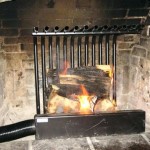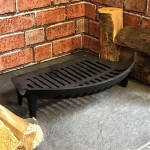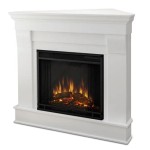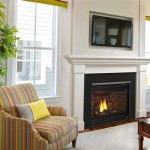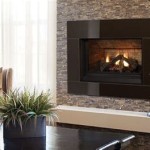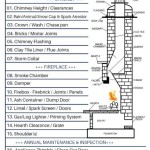Understanding Gas Fireplace Heat Exchangers: Efficiency and Functionality
Gas fireplaces offer a convenient and aesthetically pleasing alternative to traditional wood-burning fireplaces. A key component of their operation is the heat exchanger, a device designed to maximize the efficiency of the fireplace by transferring heat from the combustion gases to the surrounding air. Understanding the functionality, types, and maintenance of gas fireplace heat exchangers is crucial for optimizing performance and ensuring safe operation.
The primary purpose of a gas fireplace heat exchanger is to extract as much heat as possible from the hot exhaust gases produced during the combustion of natural gas or propane. Without a heat exchanger, a significant portion of the heat would be lost up the chimney. By capturing this heat and transferring it to the air circulating within the room, the heat exchanger significantly increases the overall heating efficiency of the fireplace. This leads to lower energy bills and a more comfortable living environment.
The design of a gas fireplace heat exchanger directly impacts its efficiency. A well-designed heat exchanger maximizes the surface area exposed to both the hot exhaust gases and the circulating air, allowing for optimal heat transfer. The materials used in construction also play a significant role, with metals like steel and aluminum being common choices due to their high thermal conductivity. Furthermore, the configuration of the heat exchanger within the fireplace unit is critical for ensuring proper airflow and preventing the buildup of soot or other combustion byproducts.
Key Components and Their Functions
A gas fireplace heat exchanger is not a single, monolithic piece but rather a system comprised of several interconnected components working in concert. Understanding these components provides insight into the overall functionality of the heat exchanger and its role in the fireplace's heating process.
Firstly, there are the combustion chambers. This is where the natural gas or propane is burned. The design of the combustion chamber impacts the efficiency of the burn and therefore the temperature of the exhaust gases entering the heat exchanger. Efficient combustion ensures that more of the fuel is converted into heat, reducing the amount of unburned fuel and pollutants released into the atmosphere.
Next are the Flues, which guide the hot exhaust gases from the combustion chamber through the heat exchanger. These flues are often designed with fins or baffles to increase the surface area in contact with the air, maximizing heat transfer. The length and configuration of the flues are carefully engineered to ensure that the exhaust gases remain in the heat exchanger long enough to transfer a significant portion of their heat.
The Convection Fans, often electrically powered, play an essential role in circulating air around the heat exchanger. These fans draw cool air from the room, pass it over the hot surfaces of the heat exchanger, and then return the warmed air to the room. The speed and efficiency of the convection fans directly impact the rate at which the fireplace heats the space. Some models offer variable fan speeds, allowing users to adjust the heating output to match their comfort needs.
Finally, a Heat Shield is used to protect surrounding components and materials from the intense heat generated by the gas fireplace. It also helps to direct the heat output into the room rather than allowing it to dissipate into the walls or floor. The heat shield is typically constructed from a heat-resistant metal or composite material and is strategically positioned around the heat exchanger and combustion chamber.
Types of Gas Fireplace Heat Exchangers
Various designs of gas fireplace heat exchangers exist, each with its own advantages and disadvantages in terms of efficiency, cost, and maintenance requirements. The type of heat exchanger used in a particular gas fireplace will depend on factors such as the size of the fireplace, the desired heating output, and the overall design of the unit.
One common type is the Tube and Fin Heat Exchanger. These exchangers consist of a series of tubes through which the hot exhaust gases flow. Fins are attached to the exterior of the tubes to increase the surface area in contact with the air. As the air flows over the fins, it absorbs heat from the exhaust gases, warming the room. Tube and fin heat exchangers are relatively simple in design and are often used in smaller gas fireplaces.
Another type is the Clamshell Heat Exchanger. This design involves two curved metal plates that are joined together to form a shell-like structure. The hot exhaust gases flow through the space between the plates, while the air circulates around the exterior of the shell. Clamshell heat exchangers offer a large surface area for heat transfer and are often used in larger gas fireplaces. However, they can be more complex to manufacture and may be more prone to warping or cracking over time.
The Plate Heat Exchanger is another option, consisting of a series of thin metal plates arranged in parallel, with small gaps between them. The hot exhaust gases flow through one set of gaps, while the air flows through the adjacent gaps. This design provides a very large surface area for heat transfer and is highly efficient, but also more complex to manufacture and can be more expensive. Furthermore, plate heat exchangers can be more susceptible to clogging with soot or other combustion byproducts, requiring more frequent maintenance.
Some gas fireplaces use a Convection Box Heat Exchanger. This design involves a box-shaped structure that surrounds the combustion chamber. The hot exhaust gases flow through the box, heating the air that circulates around the exterior. Convection box heat exchangers are relatively simple and robust, but they may not be as efficient as other types, particularly in larger fireplaces.
Maintenance and Safety Considerations
Proper maintenance of a gas fireplace heat exchanger is crucial for ensuring its efficiency, extending its lifespan, and preventing safety hazards. Regular inspection and cleaning can help to identify and address potential problems before they escalate into major issues. Ignoring maintenance can lead to reduced heating performance, increased energy consumption, and potentially dangerous conditions, such as carbon monoxide leaks.
Firstly, regular cleaning is essential. Over time, soot, dust, and other debris can accumulate on the surfaces of the heat exchanger, reducing its ability to transfer heat. This buildup can also restrict airflow, further diminishing the fireplace's heating efficiency. The frequency of cleaning will depend on the usage of the fireplace and the type of fuel being burned, but a general recommendation is to clean the heat exchanger at least once a year, preferably before the start of the heating season.
Secondly, Inspections for corrosion and damage are needed. The heat exchanger is exposed to high temperatures and corrosive gases, which can eventually lead to corrosion or cracking. Regular inspections can help to identify these problems early on, allowing for timely repairs or replacements. Look for signs of rust, pitting, or cracks on the surfaces of the heat exchanger. Any damaged components should be promptly repaired or replaced by a qualified technician.
Ensure proper ventilation around the fireplace. Adequate ventilation is essential for ensuring proper combustion and preventing the buildup of carbon monoxide. Make sure that the fireplace is properly vented to the outside and that there are no obstructions blocking the airflow around the unit. Regularly check the vent pipes for leaks or damage and repair them as needed.
Install and maintain carbon monoxide detectors. Carbon monoxide is a colorless, odorless gas that can be deadly if inhaled. It is essential to install carbon monoxide detectors in your home, especially near the fireplace, and to test them regularly to ensure that they are functioning properly. Replace the batteries in the detectors at least once a year.
Finally, always consult a qualified technician for repairs and maintenance. Gas fireplaces are complex appliances that should only be serviced by qualified technicians. Attempting to repair or maintain a gas fireplace yourself can be dangerous and may void the warranty. A qualified technician will have the knowledge and tools necessary to safely and effectively diagnose and repair any problems with the heat exchanger or other components of the fireplace.

Heatsmart Heat Exchanger Modern Gas Fireplaces Davinci Custom

Tiny Stainless Grate Fanless Hastyheat

Fireplace As Heatingsystem Called Thermo Exclusive Property Blog

Grate Heater Wikipedia

Understanding Radiant Heat Valor Gas Fireplaces

Fire Place Heat Exchanger Wood Fireplace Gas

24gr 14 24td Fireplace Heat Exchanger Hasty Hastyheat

This Is A Great Small Area Heater For Smaller Fireplace Rated At Over 28 000 Btu Of Heat It Delivers Mor Blower Gas

Choose A Fireplace Grate Heater From The 3 Top Ing For 2024

Champlain Hearthstone Stoves

